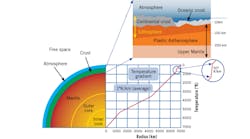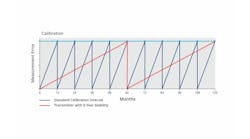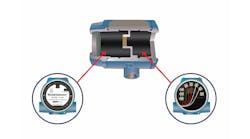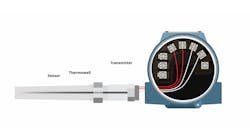There are two main types of geothermal resources: convective and hydrothermal. One is where natural hot water or steam is present and can be brought to the surface. The other is where hot rock is present.
The first commercial geothermal electric power plant opened in Italy in 1911. It was the world’s only industrial producer of geothermal electricity until New Zealand built a plant in 1958, which is still in operation today. In 1960, Pacific Gas and Electric (PG&E) began operating the first successful geothermal electric power plant in the United States at The Geysers in California. The original turbine lasted for more than 30 years and produced 11 MW net power. The technology became popular in Sweden as a result of the 1973 oil crisis, and has been growing worldwide since then. Among other regions, Greenland and Iceland have good geothermal potentials. As of 2017, the global geothermal capacity was about 14.0 GW.
In 2016, the United States led the world in geothermal electricity production with 3.5 GW installed capacity from some 80 power plants. While the largest group of geothermal power plants in the world is at The Geysers, the Philippines is the second largest producer with 1.9 GW of capacity online. Geothermal power makes up approximately 27% of the Philippines' electricity generation, but Indonesia’s 30 GW of geothermal reserves is probably the world's largest.
The temperature of thermal springs can reach 350 °C (662 °F). At that temperature, “direct heating” is possible. If the groundwater temperature exceeds 150 °C (302 °F), then “flash steam” power plants can be built. And if the water temperature is between 100 °C and 150 °C (212 to 302 °F), then “binary cycle” power plants can be operated.
When the groundwater temperature is less than 100 °C (212 °F), geothermal heat pumps (GHP) can be used to heat buildings in the winter. In the winter, geothermal heat pumps can take the heat from ground water in a well outside the building, and move it to heat air inside the home. In the summer, reverse the flow, and these same heat pumps can cool the building.
'Dry' steam plants use steam directly
Dry steam plants use the steam directly from geothermal reservoirs. The first geothermal power plant of this type was built in 1904 in Tuscany, Italy, where natural steam erupted from the earth.
The Geysers is a geothermal field located in California’s Mayacamas Mountains. It's the world’s biggest, single geothermal field. The number of geothermal power plants currently operating in that region is 18, and the present combined generation capacity of these plants is about the same as that of a nuclear reactor, about 900MW. From these plants, essentially the only emission is excess steam.
Figure 2: Optimized controls of geothermal "flash steam" type power plant.
Flash steam plants fill middle ground
For somewhat lower quality (temperature) energy sources, flash steam plants use low-pressure flash tanks to generate steam from high-pressure hot water at temperatures greater than 300 °F (-150 °C). That vapor is used to drive turbine-generators. If any liquid remains in the tank, it can be flashed again in a second, even lower pressure tank to extract even more energy.
A schematic of the control scheme used to operate a flash steam power plant is shown in Figure 2. Here, a variable speed pump transfers hot water from the production well into the steam separator. The speed of the pump is set by the tank level (LC-1). The level control signal is corrected for steam pressure (PT-2) variations. This control configuration is called a “two-element” feedwater system.
The high-pressure (HP) steam from the separator is sent to the steam turbine, the speed of which is controlled (SC-3) by throttling the flow of the high-pressure steam. The energy of this high-pressure steam generates the electricity, which is sent to the grid or to other users. The pressure of the steam exhaust from the turbine is controlled by PC-4, which is modulating the cooling water flow (CWF) through the condenser.
The system can be optimized by realizing that the lower this pressure is, the more energy the turbine will generate. So, if there are no other considerations (such as limited availability of cooling water), electricity production can be maximized by fully opening the cooling water return (CWR) valve. If one wants to minimize the cost of operation, that minimum is found where the incremental energy gain obtained by lowering the turbine exhaust pressure exceeds the increase in the pumping cost of cooling water required to achieve that reduction. The condensate is collected in an accumulator tank, and returned under level control (LC-5) into the return well.
Binary-cycle plants leverage low-temperature sources
Binary-cycle power plants transfer heat from geothermal hot water to another liquid, which is turned into the steam that drives the generator turbine. This technology allows the generation of electricity from much lower temperature resources than previously. In 2006, a binary cycle plant in Chena Hot Springs, Alaska, came online, producing electricity from a record low fluid temperature of 57 °C (135 °F). These plants differ from dry steam and flash steam systems in that the water from the geothermal reservoir never comes in contact with the turbine/generator units. Naturally, the secondary fluid has a much lower boiling point than that of the water, and therefore it will flash to vapor, which then drives the turbines and subsequently the generators.
Geothermal energy is just as inexhaustible and renewable as solar energy, and has the added advantage of being continuously available. Its production cost is less than that of fossil energy, but its front-end expenses are often high, if the production wells are deep and the ground is rocky. Still, the cost of generating geothermal power has decreased by 25% over the past two decades. The initial cost for the land and the power plant is approximately $2,500 per installed KW in the U.S., and its power is available all the time.
On average, the levelized energy costs (LCOE) of geothermal electric power at the source is about $0.06 per kWh, which is below the LCOE cost of fossil or nuclear-based electricity. Actually, the only renewable electricity that's less expensive is wind energy at an LCOE cost of $0.04 to $0.06 per kWh.
Geothermal power is inexhaustible, cost-effective, reliable, sustainable and environmentally friendly, but its use has historically been limited to areas near tectonic plate boundaries. Recent technological advances have dramatically expanded the range and size of geothermal resources, especially for applications such as building heating.






